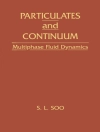During the last decade, the state of the art in Earthquake Engineering Design and Analysis has made significant steps towards a more rationale analysis of structures. Scientists have long recognized that earthquake design is guided by displacements and deformations rather than forces. However due to the historical background of structural engineers in static analyses, effects of earthquake on structures have been viewed as forces acting on the structures. All presently available design building codes are developed along these lines. Our knowledge of ground motion characteristics, earthquake geotechnical engineering, structural behaviour (design and numerical analyses) and model tests have advanced to a point where it is possible to anticipate a significant move from force based design approaches to displacements based design approaches. Although displacement based analyses constitute the kernel of most research programs, they have not yet been incorporated in the state of practice.
The purpose of the book is to review the fundamentals of displacement based methods, starting from engineering seismology, earthquake geotechnical engineering, to focus on design, analysis and testing of structures with emphasis on buildings and bridges.
表中的内容
Soil Behaviour under Cyclic Loading.- Determination of Soil Characteristics.- Soil Structure Interaction.- Earthquake Foundation Design.- Nonlinear Dynamic Analysis of Structures Subjected to Seismic Action.- Using Pushover Analysis for Assessment of Buildings and Bridges.- The Need for Displacement-Based Design and Analysis.- Fundamentals of Direct Displacement-Based Seismic Design and Assessment.- Design and Assessment of Bridges.- Seismic testing.












